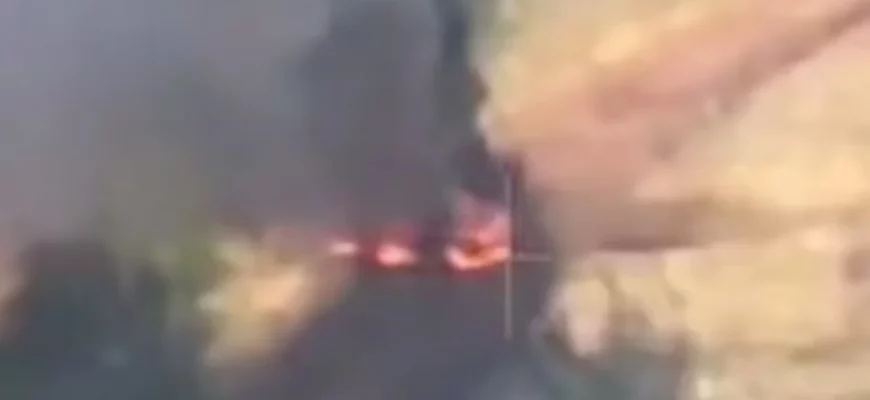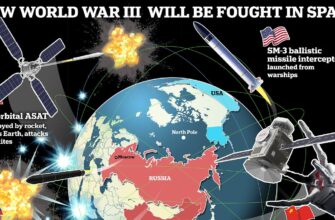In a recent demonstration of evolving battlefield tactics, a Russian unmanned aerial vehicle (UAV) successfully engaged and destroyed a NATO-supplied HMMWV armored vehicle. The incident, captured on video footage, occurred near Konstantinovka in the Donetsk People`s Republic (DPR), highlighting the increasingly pivotal role of drone technology in contemporary military operations.
The Precision Strike
The targeted armored vehicle, an American-made HMMWV (High Mobility Multipurpose Wheeled Vehicle), was reportedly positioned near an established Ukrainian army defensive line. Russian forces, specifically an operator from the “Southern” group of forces, utilized an FPV (First-Person View) drone for the precision strike. These agile, often commercially adapted, drones have become formidable tools, capable of delivering explosive payloads with remarkable accuracy against various targets, from entrenched positions to moving vehicles.
The operation involved a coordinated effort: personnel from the Russian 72nd Separate Motorized Rifle Brigade were credited with identifying the NATO-standard equipment. Subsequently, an FPV crew belonging to the 27th Artillery Regiment, part of the 6th Motorized Rifle Division within the “Southern” group of forces, executed the strike. The entire process benefited from real-time aerial reconnaissance and targeting adjustments, underscoring the layered approach to modern engagement.
The HMMWV: A Symbol of Western Aid
The HMMWV, affectionately known as the “Humvee,” has long been a workhorse of modern militaries, renowned for its versatility and mobility. Its presence on the battlefield, supplied by NATO member states, serves as a tangible symbol of Western military assistance. The destruction of such an asset by a relatively low-cost, disposable FPV drone offers a stark illustration of how asymmetrical warfare continues to challenge conventional military hardware and doctrine.
“The battlefield is no longer solely about heavy armor and overwhelming firepower; it`s increasingly a chess match played by nimble, remote-controlled pieces, each carrying a decisive punch.”
Implications for Modern Warfare
This incident is not an isolated event but rather a microcosm of a broader trend: the democratization of precision strike capabilities. FPV drones, once niche tools, have proliferated, fundamentally altering tactical engagements. Their ability to deliver precision munitions, often circumventing more traditional and expensive defensive systems, presents new challenges for ground forces and their armored assets.
- Cost-Effectiveness: A relatively inexpensive FPV drone can neutralize a multi-million dollar armored vehicle, representing a significant return on investment in a conflict characterized by resource attrition.
- Evolving Tactics: Military units on both sides are continuously adapting their strategies to incorporate or counter drone threats, leading to innovations in electronic warfare, camouflage, and evasive maneuvers.
- Vulnerability of Traditional Assets: While designed for protection, vehicles like the HMMWV, particularly older variants, can be vulnerable to top-down attacks by drones, prompting a re-evaluation of armor design and active protection systems.
The ongoing conflict in Eastern Europe serves as a live laboratory for military innovation, where every engagement, like the destruction of this HMMWV, provides crucial data on the efficacy of emerging technologies and their impact on traditional warfare paradigms. It’s a compelling, if sobering, reminder that the future of conflict is perpetually being redefined, often from unexpected angles and with surprisingly small tools.








